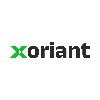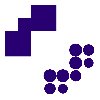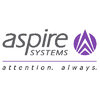Filter interviews by
iLink Digital Software Engineer Interview Questions and Answers
iLink Digital Software Engineer Interview Experiences
4 interviews found
(1 Question)
- Q1. What is the use of middleware
- Ans.
Middleware acts as a bridge between different software applications, enabling communication and data management.
Facilitates communication between client and server applications, e.g., REST APIs.
Handles data management and integration, such as database middleware like Hibernate.
Provides authentication and authorization services, e.g., OAuth middleware.
Enables message queuing and processing, like RabbitMQ or Apache Kafka...
Skills evaluated in this interview
I applied via LinkedIn and was interviewed in Feb 2024. There were 2 interview rounds.
It was based on a coding round where they asked about oops, c++
(1 Question)
- Q1. They asked about the basic SQL, python, and data science
Interview Preparation Tips
I applied via Naukri.com and was interviewed in Jan 2023. There was 1 interview round.
(9 Questions)
- Q1. What's manage and unmage in C++
- Ans.
manage and unmanage are not standard terms in C++
There are no standard terms or concepts called 'manage' and 'unmanage' in C++
These terms might be specific to a particular framework or library
Without more context, it is difficult to provide a specific answer
- Q2. Difference between C and C++
- Ans.
C is a procedural programming language, while C++ is an extension of C with object-oriented programming features.
C is a procedural language, while C++ supports both procedural and object-oriented programming paradigms.
C++ has additional features like classes, objects, inheritance, and polymorphism.
C++ supports exception handling and templates, which are not available in C.
C++ has a standard template library (STL) that ...
- Q3. Why OOP is needed what's encapsulation, abstraction, polymorphism different types of polymorphism
- Ans.
OOP is needed for modular and reusable code. Encapsulation hides implementation details. Abstraction simplifies complex systems. Polymorphism allows objects to take on multiple forms.
OOP promotes code reusability and modularity
Encapsulation hides implementation details and protects data
Abstraction simplifies complex systems by focusing on essential features
Polymorphism allows objects to be used in multiple ways
Types of...
- Q4. What is pure virtual function write one example of pure virtual function
- Ans.
A pure virtual function is a function declared in a base class that has no implementation and must be overridden in derived classes.
Pure virtual functions are used to create abstract classes, which cannot be instantiated.
They provide a common interface for derived classes to implement their own functionality.
An example of a pure virtual function is a 'draw' function in a base 'Shape' class, which must be implemented by...
- Q5. What's vtable and vpointer explain by drawing
- Q6. What's difference in pass by reference and pass by pointer which one is better?
- Ans.
Pass by reference and pass by pointer are both ways to pass data to a function, but they differ in how they access and modify the data.
Pass by reference uses a reference to the original variable, allowing direct access and modification.
Pass by pointer uses a pointer to the memory address of the variable, requiring dereferencing to access and modify the data.
Pass by reference is generally considered safer and more conve...
- Q7. How to make dll. Can you make simple dll file
- Ans.
A DLL (Dynamic Link Library) is a file containing code and data that can be used by multiple programs simultaneously.
To create a DLL, you need to write the code in a programming language like C++ or C#.
Compile the code into an object file and then link it with a DLL linker to create the DLL file.
DLLs can contain functions, classes, variables, and resources that can be accessed by other programs.
DLLs provide code reusab...
- Q8. What's thread synchronization semaphores in threading what's critical section in threading One threading problem with 3 threads and how will you synchronize them?
- Ans.
Thread synchronization is the coordination of multiple threads to ensure they access shared resources in a controlled manner.
Thread synchronization prevents race conditions and data inconsistencies.
Semaphores are synchronization primitives used to control access to resources.
Critical sections are code segments that must be executed atomically.
A common threading problem is the producer-consumer problem.
Synchronization m...
- Q9. Two sum problem from Leetcode
Interview Preparation Tips
- C++
- Multithreading
Skills evaluated in this interview

It was three section as in all other aptitude round
(3 Questions)
- Q1. They asked everything from your resume and Tested your coding knowledge
- Q2. You project and your role
- Q3. Write a basic code you know in python
- Ans.
A basic code in Python
Print 'Hello, World!' using print() function
Create a variable and assign a value to it
Use if-else statement to check a condition
Create a function and call it
(2 Questions)
- Q1. Tell me about yourself,Bond and stuff
- Q2. Why ILinlk digital company
Interview Preparation Tips
Skills evaluated in this interview
Top trending discussions






Interview questions from similar companies

Software Engineer Interview Questions & Answers
Iris Softwareposted on 14 Mar 2015
Interview Questionnaire
13 Questions
- Q1. Difference between java and c?
- Ans.
Java is an object-oriented language while C is a procedural language.
Java is platform-independent while C is platform-dependent.
Java has automatic garbage collection while C requires manual memory management.
Java has built-in support for multithreading while C requires external libraries.
Java has a larger standard library compared to C.
Java is more secure than C due to its strong type checking and exception handling.
C ...
- Q2. Aggregation functions in DBMS?
- Ans.
Aggregation functions are used to perform calculations on groups of data in a database.
Aggregation functions include COUNT, SUM, AVG, MAX, and MIN.
They are used with the GROUP BY clause to group data based on a specific column.
COUNT function returns the number of rows in a table or the number of non-null values in a column.
SUM function returns the sum of values in a column.
AVG function returns the average of values in ...
- Q3. How to write any sentence (given to u ) in mirror image form in java?(ans :by 2 ways 1. reverse string function in string object 2 .by aaray conversion )
- Ans.
Two ways to write a sentence in mirror image form in Java: reverse string function and array conversion.
Use the reverse() method of the String class to reverse the sentence
Convert the sentence to a character array, then swap the first and last characters, second and second-to-last characters, and so on until the middle is reached
Example: 'Hello World' becomes 'dlroW olleH'
- Q4. Why static is used in "public static void main"?
- Ans.
Static is used in public static void main to allow the method to be called without creating an instance of the class.
Static methods belong to the class and not to any instance of the class.
The main method is the entry point of a Java program and needs to be called without creating an object of the class.
The static keyword allows the main method to be called directly from the class, without creating an instance of the c...
- Q5. Why there is abstract ,interface and enum class in java?
- Ans.
Abstract classes, interfaces, and enums provide abstraction and modularity in Java.
Abstract classes provide a partial implementation of a class and cannot be instantiated.
Interfaces define a set of methods that a class must implement and can be used for multiple inheritance.
Enums provide a set of named constants.
All three are used for abstraction and modularity in Java.
Abstract classes and interfaces are used for polym...
- Q6. Object oriented software engg definition(definition contains word"framwork") ?and definitionof framwork
- Ans.
Object-oriented software engineering is a framework for designing and developing software using objects.
Object-oriented software engineering is a methodology for designing and developing software using objects.
It involves creating classes and objects that encapsulate data and behavior.
Frameworks are pre-built structures that provide a foundation for building software applications.
Frameworks can include libraries, APIs,...
- Q7. Properties of java(object oriented languages)
- Ans.
Java is an object-oriented language with features like inheritance, encapsulation, and polymorphism.
Inheritance allows classes to inherit properties and methods from other classes.
Encapsulation hides the implementation details of a class from other classes.
Polymorphism allows objects to take on multiple forms or behaviors.
Java also supports abstraction, interfaces, and exception handling.
Example: class Car extends Vehi...
- Q8. Normalization in DBMS (in detail with eg.)
- Ans.
Normalization is a process of organizing data in a database to reduce redundancy and dependency.
Normalization is used to eliminate data redundancy and improve data integrity.
It involves dividing a database into two or more tables and defining relationships between them.
There are different levels of normalization, such as first normal form (1NF), second normal form (2NF), and so on.
Normalization helps in efficient data ...
- Q9. What is difference between ADBMS and DBMS?
- Ans.
ADBMS stands for Advanced Database Management System which is an extension of DBMS with additional features.
ADBMS has advanced features like data mining, data warehousing, and online analytical processing.
ADBMS is used for handling large and complex data sets.
DBMS is a basic system for managing data and is used for small and simple data sets.
DBMS does not have advanced features like ADBMS.
Examples of ADBMS are Oracle, ...
- Q10. Your Introduction
- Ans.
I am a software engineer with 5 years of experience in developing web applications.
Proficient in programming languages such as Java, Python, and JavaScript
Experience in developing RESTful APIs and microservices
Familiarity with front-end technologies such as HTML, CSS, and React
Strong understanding of database management systems like MySQL and MongoDB
Experience in Agile development methodologies
- Q11. Why u want do job?(why ur not doing post graduation?)
- Ans.
I want to gain practical experience and contribute to the industry while also learning on the job.
I believe that hands-on experience is invaluable in the software engineering field
I am eager to apply my skills and knowledge to real-world projects
I am excited to work with a team and learn from experienced professionals
I am not currently pursuing post-graduation as I feel that gaining industry experience is more importan...
- Q12. What will u do if ur from java background and company requires .NET peoples,not java peoples
- Ans.
I would leverage my Java skills to quickly learn .NET and demonstrate my adaptability and problem-solving abilities.
Identify transferable skills: Both Java and .NET share object-oriented principles, making it easier to adapt.
Engage in self-study: Utilize online resources like Microsoft Learn or Pluralsight to gain .NET knowledge.
Build a small project: Create a simple application using .NET to showcase my ability to lea...
- Q13. Why this Company ?and some information about company( like achivements)
Interview Preparation Tips
Experience: Test contains 45 question having Maths(approx. 30 questions) , verbal & non-verbal , logical reasoning Qustions.
1 hr to solve it. And no negative marking .Easy aptitude test for me cause i hav given almost 8 apti tests before it. Most of the questions from R.S. Agarwal (Quantitative Aptitude)Book. we total 40 to 50 peoples given the test(All branch students eligibal for test above 60 % aggregate)
Duration: 60 minutes
Total Questions: 45
Round: Technical Interview
Experience: Out of 40-50 peoples appeared for aptitude test 12 students were eligibal for technical interview. Interview was in the Company . The interviewer ask the questions from the answers i am giving to his previous question .And trying to confuse me.
but after understanding my programming to his question and some logical answers to his qusetions he stops confusing me. And go on saying 'You r correct or you r near to answer,think little bit more about it'.
Tips: Be confident , If u don't know answer say that "i didn't brush up that topic". Don't go on interviwer's expression, they(expressions) always distract u.
Round: HR Interview
Experience: After 50-55 minutes of technical interview , we had HR interview.It was easy Interview, all the 5 candidates have these same set of questions ,so we prepared the answers and all 5 got selected in company.
General Tips: Do aptitude test practice online more
Don't add things that u dont know in resume
(for freshers :keep resume exactly of 2 pages and simple,don't use different font styles and size much)
Skills: Java programming, c++, sql(DBMS), Html
College Name: TERNA ENGINEERING COLLEGE
Motivation: It is college campus placement only, But The Representator of company(each) gives the motivation to all candiates mostly
Skills evaluated in this interview

I applied via Naukri.com and was interviewed before May 2018. There were 5 interview rounds.
Interview Questionnaire
4 Questions
- Q1. Telephonic technical
- Q2. Core Java related exception handling ,design pattern ,oops solid design principle, rest API, different annotations of spring and jpa
- Q3. Same questions on telephonic round but detailed elaborate and given simple problem statement we had to justify that why it's time n space complexity valid. Rest API questions hibernate orm use
- Q4. Manager round just to check whether you have actually worked on project or not stress testing performance questions scenario questions
Interview Preparation Tips
Skills: Core Java sevlet JSP hibernate spring rest API, Communication, Body Language, Problem Solving, Analytical Skills, Decision Making Skills
Duration: 1-4 weeks

I applied via Recruitment Consultant and was interviewed before Jan 2020. There were 5 interview rounds.
Interview Questionnaire
1 Question
- Q1. What Prog Languages known? Prior Software Experience? How good on U.S. Client Face to Face and telephonic interaction for projects?
- Ans.
I am proficient in Java, Python, and C++. I have 2 years of experience in software development. I have excellent communication skills for client interaction.
Proficient in Java, Python, and C++
2 years of software development experience
Excellent communication skills for client interaction
Interview Preparation Tips

Interview Questionnaire
2 Questions
- Q1. Basics from all framework you have worked on.
- Q2. There working all are non technical people's they don't know the projects here major people working in testing and non related work

I appeared for an interview before Nov 2020.
Interview Questionnaire
3 Questions
- Q1. Simple and Easy questions on OOPS, static variable, Prioriry queue,
- Q2. Design question,
- Q3. Binary Search
Interview Preparation Tips

I applied via Naukri.com and was interviewed before Apr 2021. There was 1 interview round.
(2 Questions)
- Q1. Basic python list tuples set dictionary related questions
- Q2. Decorators generator and django rest framework
Interview Preparation Tips
iLink Digital Interview FAQs
Some of the top questions asked at the iLink Digital Software Engineer interview -
Tell us how to improve this page.
iLink Digital Interviews By Designations
- iLink Digital Software Engineer Interview Questions
- iLink Digital Consultant Interview Questions
- iLink Digital Senior Specialist Interview Questions
- iLink Digital Software Engineer Trainee Interview Questions
- iLink Digital Senior Analyst Interview Questions
- iLink Digital Associate Consultant Interview Questions
- iLink Digital Intern Interview Questions
- iLink Digital Data Engineer Interview Questions
- Show more
Interview Questions for Popular Designations
- Software Developer Interview Questions
- Senior Software Engineer Interview Questions
- Senior Engineer Interview Questions
- System Engineer Interview Questions
- Associate Software Engineer Interview Questions
- Project Engineer Interview Questions
- Lead Engineer Interview Questions
- Software Development Engineer Interview Questions
- Show more
Overall Interview Experience Rating
based on 3 interview experiences
Difficulty level
Duration
Software Engineer Interview Questions from Similar Companies
iLink Digital Software Engineer Reviews and Ratings
based on 13 reviews
Rating in categories
|
Senior Software Engineer
138
salaries
| ₹10.3 L/yr - ₹18 L/yr |
|
Software Engineer
129
salaries
| ₹3.8 L/yr - ₹7.6 L/yr |
|
Senior Technical Specialist
110
salaries
| ₹18.4 L/yr - ₹32 L/yr |
|
Technical Specialist
106
salaries
| ₹13.6 L/yr - ₹23.5 L/yr |
|
Software Engineer Trainee
56
salaries
| ₹3.5 L/yr - ₹6 L/yr |

Xoriant

Photon Interactive

CitiusTech

Iris Software
- Home >
- Interviews >
- iLink Digital Interview Questions
















